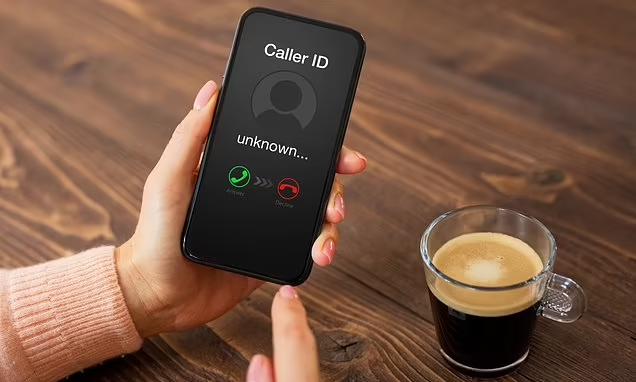Identifying the Identity of an Unknown Caller can be challenging despite their prevalence in today’s world. However, there are some ways to track them down.

Are you frequently bothered by unidentified callers? Whether it’s vishing scams or unsolicited marketing calls, receiving unexpected and unwanted phone calls can be extremely irritating and a complete time-waster.
In case you receive recurrent calls from an unfamiliar number, it’s advisable to ascertain the caller’s identity and explore appropriate measures.
Fortunately, there are multiple third-party services and online resources that can help disclose the person behind the phone.
What does “No Caller ID” mean?
If you receive a call from “no caller ID,” it indicates that the person calling intentionally concealed their phone number.
Although people may hide their caller ID to preserve privacy, spammers frequently employ this tactic for nefarious and deceitful reasons.
There are various ways to conceal your caller ID. In the US, simply prepend *67 ahead of the number you plan to dial.
So if, for instance, 56565677 is your target number, then use *67 56565677 when placing the call in order not to reveal your identity.
If you’re located in either Ireland or England instead and wish to mask outgoing calls, replace *67 with 141 before entering a telephone number as described above.
Another option would be customizing Android/iPhone settings so that outbound calls can be made anonymously without having any traces left behind on-screen regarding who dialed whom!
Although these services can provide a degree of anonymity, it is not completely foolproof.
Certain network providers offer the Last Call Return Service that enables you to uncover the identity of an unknown caller.
Once you have access to this information, you could utilize third-party applications or reverse phone lookup sites to gather additional details about them.
Utilize sites for Reverse Phone Lookup
Compared to search engines, a reverse phone lookup website has access to a more extensive database that gathers information from various sources.
These may include publicly available records, white and yellow pages directories, as well as social media databases.
The data used by paid phone lookup services may be sourced from the dark web and confidential records of business associates, which is why relying on free phone lookup services might not yield favorable outcomes.
Use reverse phone lookup services cautiously, as registering with personal information may allow others to link your phone number with your identity.
With that being acknowledged, here are some widely used websites for reverse phone number lookup to assist you in recognizing the unidentified caller.
1. Whitepages
Beyond being a mere reverse phone lookup service, Whitepages functions as a people search platform that enables users to retrieve contact information by name, address, or phone.
In addition to this function, it serves as an aid for background checks with access granted to criminal records and fraud ratings associated with various business/professional licenses.
2. Zlookup
You don’t need to register with Zlookup, a no-cost reverse phone number search platform.
Just enter the telephone number you want to look up and hit Search. The site will use its database as well as other resources to locate a match.
3. SpyDialer
You can use this reverse lookup site SpyDialer for free to discover caller information from publicly available data. There’s no need to create an account to access the service: simply input the phone number you wish to investigate and hit Search.
Afterward, select a search preference. Should you decide to Hear Voicemail, the system will call the specified number and capture the voicemail message.
The recorded greeting may have information such as the caller’s name among other details. Other available options for searching include name lookup, photo identification, and phone spam detection.
Install a Caller Identification App on Your Mobile Device
TrueCaller and other caller identification apps can provide you with the names and locations of unknown callers, making them a useful tool for identifying incoming calls.
However, be aware that these apps are not foolproof in their accuracy but still offer an easy solution to determine the identity of unidentified callers.
TrueCaller app is a caller ID tool with features like identifying unknown numbers, spam reporting, and automatic blocking of unwanted calls and SMS messages.
To deal with unsolicited marketing or spam calls specifically, one can simply add the number to their Android block list, get in touch with their service provider, or resort to third-party apps for assistance.
Free download is available for TrueCaller on Android and iOS platforms.
Get in touch with your network service provider
In case your carrier doesn’t provide call tracing services such as *69 or *57, you may reach out to your network service provider for assistance in identifying the caller’s information.
However, it is a complex procedure since the service providers are under a legal obligation to safeguard subscriber identification unless requested by law enforcement agencies through proper judicial avenues.
Built-in caller identification is available on certain Android devices and helps detect spam calls reported by the community.
Nonetheless, for harassment situations, it’s recommended to use your network service provider’s calling tracing services while immediately contacting local law enforcement.
Identify the phone number by using a search engine
To locate and obstruct spam calls, a convenient method is to look up the phone number on search engines like Google.
Many websites collect spam and deceitful numbers reported by people using community reporting sites.
Google searches for phone numbers by entering digits, scanning the web for references, and prioritizing websites with spam records for deceptive numbers.
It may also exhibit all social media or other openly accessible user profiles associated with this contact information.
Conclusion
Reverse phone lookup websites have access to a more extensive database than search engines, including publicly available records, white and yellow pages directories, and social media databases.
However, paid phone lookup services may be sourced from the dark web and confidential business records.
Users should use reverse phone lookup services cautiously, as registering with personal information may allow others to link your phone number with your identity.
Some widely used websites for reverse phone number lookup include Whitepages, Zlookup, and SpyDialer.
Caller identification apps like TrueCaller can provide names and locations of unknown callers, but they are not foolproof in their accuracy.
To deal with unsolicited marketing or spam calls, add the number to your Android block list, contact your service provider, or resort to third-party apps for assistance.
If your carrier doesn’t provide call tracing services, reach out to your network service provider for assistance in identifying the caller’s information.
However, it is a complex procedure as service providers are under a legal obligation to safeguard subscriber identification unless requested by law enforcement agencies.
Using search engines like Google can help locate and obstruct spam calls.





